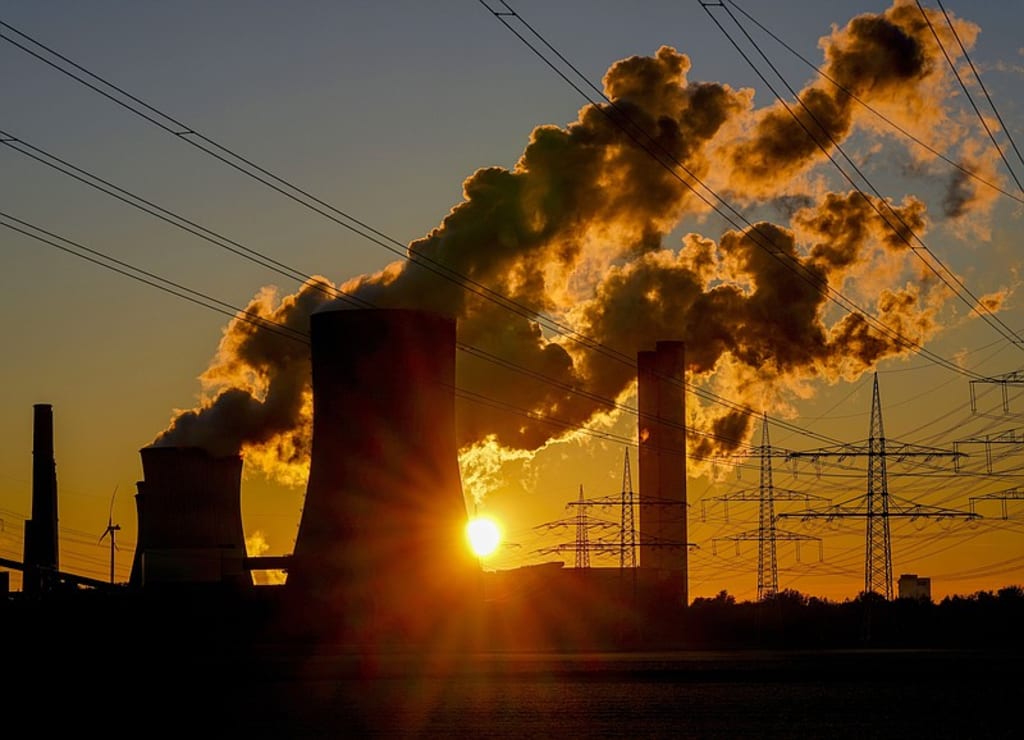Global warming updates | Climate Change | Global warming
Global warming world wide

In common usage, climate change describes global warming—the ongoing increase in global average temperature—and its effects on Earth's climate system. Climate change in a broader sense also includes previous long-term changes to Earth's climate. The current rise in Global Warming average temperature is more rapid than previous changes, and is primarily caused by humans burning fossil fuels.[3][4] Fossil fuel use, deforestation, and some agricultural and industrial practices add to greenhouse gases, notably carbon dioxide and methane.[5] Greenhouse gases absorb some of the heat that the Earth radiates after it warms from sunlight. Larger amounts of these gases trap more heat in Earth's lower atmosphere, causing global warming.
Climate change has an increasingly large impact on the environment. Deserts are expanding, while heat waves and wildfires are becoming more common.[6] Amplified warming in the Arctic has contributed to thawing permafrost, retreat of glaciers and sea ice decline.[7] Higher temperatures are also causing more intense storms, droughts, and other weather extremes.[8] Rapid environmental change in mountains, coral reefs, and the Arctic is forcing many species to relocate or become extinct.[9] Even if efforts to minimise future warming are successful, some effects will continue for centuries. These include ocean heating, ocean acidification and sea level rise.[10]
Climate change threatens people with increased flooding, extreme heat, increased food and water scarcity, more disease, and economic loss. Human migration and conflict can also be a result.[11] The World Health Organization (WHO) calls climate change the greatest threat to global health in the 21st century.[12] Societies and ecosystems will experience more severe risks without action to limit warming.[13] Adapting to climate change through efforts like flood control measures or drought-resistant crops partially reduces climate change risks, although some limits to adaptation have already been reached.[14] Poorer communities are responsible for a small share of global emissions, yet have the least ability to adapt and are most vulnerable to climate change.[15][16]
Bobcat Fire in Monrovia, CA, September 10, 2020
Bleached colony of Acropora coral
A dry lakebed in California, which is experiencing its worst megadrought in 1,200 years.[17]
Examples of some effects of climate change: Wildfire intensified by heat and drought, bleaching of corals occurring more often due to marine heatwaves, and worsening droughts compromising water supplies.
Many climate change impacts have been felt in recent years, with 2023 the warmest on record at +1.48 °C (2.66 °F) since regular tracking began in 1850.[18][19] Additional warming will increase these impacts and can trigger tipping points, such as melting all of the Greenland ice sheet.[20] Under the 2015 Paris Agreement, nations collectively agreed to keep warming "well under 2 °C". However, with pledges made under the Agreement, global warming would still reach about 2.7 °C (4.9 °F) by the end of the century.[21] Limiting warming to 1.5 °C will require halving emissions by 2030 and achieving net-zero emissions by 2050.[22]
Fossil fuel use can be phased out by conserving energy and switching to energy sources that do not produce significant carbon pollution. These energy sources include wind, solar, hydro, and nuclear power.[23][24] Cleanly generated electricity can replace fossil fuels for powering transportation, heating buildings, and running industrial processes.[25] Carbon can also be removed from the atmosphere, for instance by increasing forest cover and farming with methods that capture carbon in soil.[26][27]
Terminology
Before the 1980s it was unclear whether the warming effect of increased greenhouse gases was stronger than the cooling effect of airborne particulates in air pollution. Scientists used the term inadvertent climate modification to refer to human impacts on the climate at this time.[28] In the 1980s, the terms global warming and climate change became more common, often being used interchangeably.[29] Scientifically, global warming refers only to increased surface warming, while climate change describes both global warming and its effects on Earth's climate system, such as precipitation changes.[28]
Climate change can also be used more broadly to include changes to the climate that have happened throughout Earth's history.[30] Global warming—used as early as 1975[31]—became the more popular term after NASA climate scientist James Hansen used it in his 1988 testimony in the U.S. Senate.[32] Since the 2000s, climate change has increased usage.[33] Various scientists, politicians and media now use the terms climate crisis or climate emergency to talk about climate change, and global heating instead of global warming.[34]
Global temperature rise
Global surface temperature reconstruction over the last 2000 years using proxy data from tree rings, corals, and ice cores in blue.[35] Directly observed data is in red.[36]
Temperature records prior to global warming
Main articles: Climate variability and change; Temperature record of the last 2,000 years; and Paleoclimatology
Prior to human evolution the record includes hotter temperatures and occasional abrupt changes, such as the Paleocene–Eocene Thermal Maximum 55.5 million years ago.[37]
Over the last few million years Human beings evolved in a climate that cycled through ice ages, with global average temperature ranging between current levels and 5–6 °C colder than today.[38][39] Historical patterns of warming and cooling, like the Medieval Warm Period and the Little Ice Age, did not occur at the same time across different regions. Temperatures may have reached as high as those of the late 20th century in a limited set of regions.[40] Climate information for that period comes from climate proxies, such as trees and ice cores.[41]
Warming since the Industrial Revolution
Main article: Instrumental temperature record
In recent decades, new high temperature records have substantially outpaced new low temperature records on a growing portion of Earth's surface.[42]
There has been an increase in ocean heat content during recent decades as the oceans absorb over 90% of the heat from global warming.[43]
Around 1850 thermometer records began to provide global coverage.[44] Between the 18th century and 1970 there was little net warming, as the warming impact of greenhouse gas emissions was offset by cooling from sulfur dioxide emissions. Sulfur dioxide causes acid rain, but it also produces sulfate aerosols in the atmosphere, which reflect sunlight and cause so-called global dimming. After 1970, the increasing accumulation of greenhouse gases and controls on sulfur pollution led to a marked increase in temperature.[45][46][47]





Comments
There are no comments for this story
Be the first to respond and start the conversation.